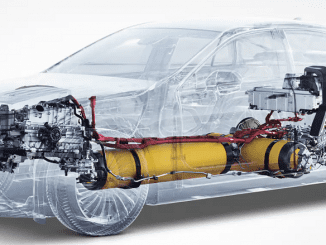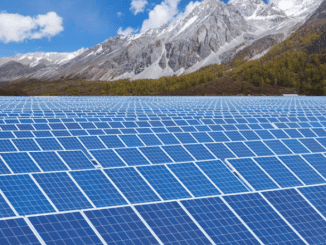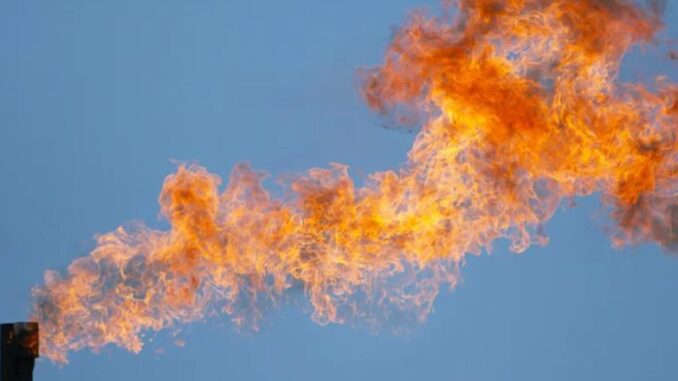
WASHINGTON, DC, November 12, 2024 (ENS) – As global leaders gather today in Baku, Azerbaijan for the UN’s annual climate conference in another attempt to limit climate change, the U.S. Environmental Protection Agency delivered a final rule to reduce methane emitted from the oil and gas sector by charging for waste emissions.
Methane is a potent greenhouse gas responsible for one-third of today’s global warming. Rapid reductions in methane emissions are one of the most important and cost-effective actions the United States can take in the short term to slow rapidly rising global temperatures.
Methane is considered a climate super pollutant, the second-largest contributor to climate warming after carbon dioxide. Over the span of 100 years, one ton of emitted methane traps 28 times as much heat in the Earth’s ecosystems as one ton of emitted carbon dioxide, but methane has a relatively short lifespan of seven to 12 years in the atmosphere, while CO2 can persist for hundreds of years.
An estimated 60 percent of today’s methane emissions are the result of human activities, with only about 40 percent coming from natural sources. The largest sources of methane are fossil fuels, agriculture, and decomposition of landfill waste. The oil and natural gas sector is the greatest industrial source of methane emissions in the United States.
About 25 percent of Earth’s human-derived methane emissions are emitted from oil and gas production, which has increased over the last 20 years, in part due to growing gas production in Russia and the United States.
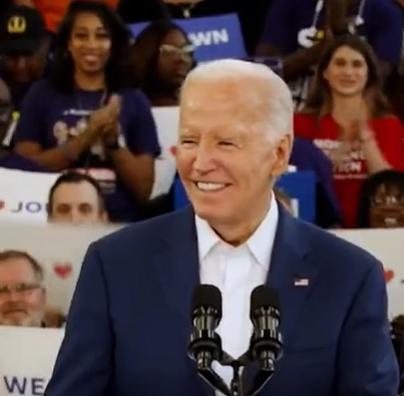
This latest action under President Joe Biden’s Methane Emissions Reduction Action Plan advances implementation of Congress’s directive in the Inflation Reduction Act of 2022 to collect a Waste Emissions Charge to ensure natural gas reaches the market rather than polluting the air.
Congress established the charge on large emitters of methane if their emissions exceed specific performance levels and directed EPA to collect the charge and implement other features of the program, including providing exemptions for actions that reduce methane releases.
Today’s final rule is intended to incentivize companies to take near-term action to conserve energy resources for American consumers and reduce methane emissions.
“The final Waste Emissions Charge is the latest in a series of actions under President Biden’s methane strategy to improve efficiency in the oil and gas sector, support American jobs, protect clean air, and reinforce U.S. leadership on the global stage,” said EPA Administrator Michael Regan, announcing the new fee today.

“EPA has been engaging with industry, states, and communities to reduce methane emissions so that natural gas ultimately makes it to consumers as usable fuel – instead of as a harmful greenhouse gas,” Regan said.
“Along with EPA’s complementary set of technology standards and historic financial and technical resources under the Inflation Reduction Act, today’s action ensures that America continues to lead in deploying technologies and innovations that lower our emissions,” Regan said.
EPA estimates that this rule alone will result in cumulative emissions reductions of 1.2 million metric tons of methane (34 million metric tons CO2-equivalent) through 2035 – the equivalent of taking nearly eight million gas-powered cars off the road for a year. It will deliver total climate benefits of up to $2 billion.
Only High Emitters Will Be Charged
The Waste Emissions Charge applies to methane from certain oil and gas facilities that report emissions of more than 25,000 metric tons of carbon dioxide equivalent per year to the Greenhouse Gas Reporting Program, beginning with methane emissions reported in calendar year 2024.
Also, as directed by Congress, the Waste Emissions Charge starts at $900 per metric ton of wasteful emissions in calendar year 2024, increasing to $1,200 for calendar year 2025, and $1,500 for calendar year 2026 and beyond, and only applies to emissions that exceed methane intensity levels specified by law.
EPA’s final rule details how the charge will be implemented, including the calculation of the charge and how exemptions from the charge will be applied.
Facilities in compliance with the recently finalized Clean Air Act standards for oil and gas operations would be exempt from the charge after certain criteria set by Congress are met.
The agency expects that over time, fewer facilities will face the charge as they reduce their emissions and become eligible for this regulatory compliance exemption.
In keeping with the provisions of the Inflation Reduction Act, the Waste Emissions Charge works in concert both with Clean Air Act standards issued in March 2024 to limit methane from new and existing oil and gas operations, and with over $1 billion in financial and technical assistance that EPA has partnered with the U.S. Department of Energy to provide under the Inflation Reduction Act to support monitoring and mitigation of methane emissions from the oil and gas sector.
Combined, these actions will help position the United States as the most efficient producer of oil and natural gas in the world and ensure that the industry remains competitive in overseas markets that require a minimum level of emissions performance.
In the final rule, EPA made changes in response to public comments that will provide owners and operators of oil and natural gas facilities with greater flexibility to achieve emission reductions and thereby avoid the charge.
Oil and Gas Industry Responds, But Not With Applause
The American Petroleum Institute is an industry association whose Senior Vice President of Policy, Economics and Regulatory Affairs Dustin Meyer issued this critical statement in response to the EPA’s final rule to establish a fee on methane emissions.
“API supports smart, effective methane regulations, yet this rule hampers our ability to meet the growing energy needs of American families and businesses and fails to advance meaningful emissions reduction. This is the wrong approach on methane policymaking, and we look forward to working with the incoming administration and new Congress to get this right,” Meyer said.
The U.S. is leading the world on energy production and emissions reductions, and due to industry action, methane emissions have fallen by 37 percent between 2015 and 2022, API states.
Industry-led initiatives like The Environmental Partnership, whose members make up over 60 percent of the U.S. onshore natural gas and oil industry including major producers, are committed to accelerating progress on methane emissions reductions by driving collaboration and sharing best practices across the industry, according to API.
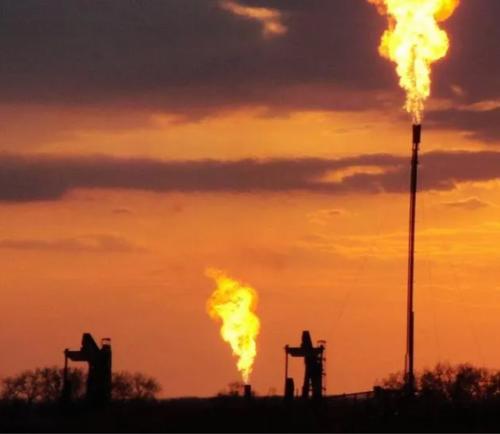
Participants in The Environmental Partnership believe that addressing environmental impacts is an important component of securing America’s long-term energy future. To that end, The Environmental Partnership’s initial focus is on solutions that are technically feasible, commercially proven and will result in significant emissions reductions.
The Environmental Partnership is expected to provide a forum for participants to share information, and analyze best practices and technological breakthroughs in order to help improve our understanding of emissions and how best to reduce them.
States now have a stronger incentive to submit satisfactory plans for limiting methane from existing oil and gas operations in a timely manner. The Waste Emissions Charge will apply until oil and gas operators achieve full compliance with state plans.
The Waste Emissions Charge is a key component of EPA efforts to reduce domestic methane emissions.
In March, EPA issued final standards under the Clean Air Act to cut methane emissions and other harmful air pollutants from new and existing oil and gas operations.
In addition to creating the Waste Emissions Charge, the Inflation Reduction Act provides more than $1 billion to help monitor, measure, quantify, and reduce methane emissions from the oil and gas sector.
Through the Methane Emissions Reduction Program, or MERP, the Environmental Protection Agency is partnering with the Department of Energy to provide financial and technical assistance for the adoption of available and innovative technologies. This includes funds to mitigate emissions at low-producing conventional wells and other oil and gas infrastructure, to support methane monitoring and measurement nationwide, and to provide transparent emissions data to affected communities.
The Waste Emissions Charge and MERP’s funding opportunities, together with EPA’s standards under the Clean Air Act, will advance the adoption of cost-effective technologies, reduce wasteful practices, and yield economic and environmental benefits, while driving continued innovation in methane detection, monitoring, and mitigation techniques, EPA says.
EPA Administrator Regan said, “EPA has been engaging with industry, states, and communities to reduce methane emissions so that natural gas ultimately makes it to consumers as usable fuel – instead of as a harmful greenhouse gas. Along with EPA’s complementary set of technology standards and historic financial and technical resources under the Inflation Reduction Act, today’s action ensures that America continues to lead in deploying technologies and innovations that lower our emissions.”
For more information, please visit the Methane Emissions Reduction Program website.
Featured image: Gas flaring during oil and gas production is a known source of methane emissions. June 2021. (Photo by Leslie Von Pless courtesy NASA Jet Propulsion Laboratory)
© 2024, Environment News Service. All rights reserved. Content may be quoted only with proper attribution and a direct link to the original article. Full reproduction is prohibited.


